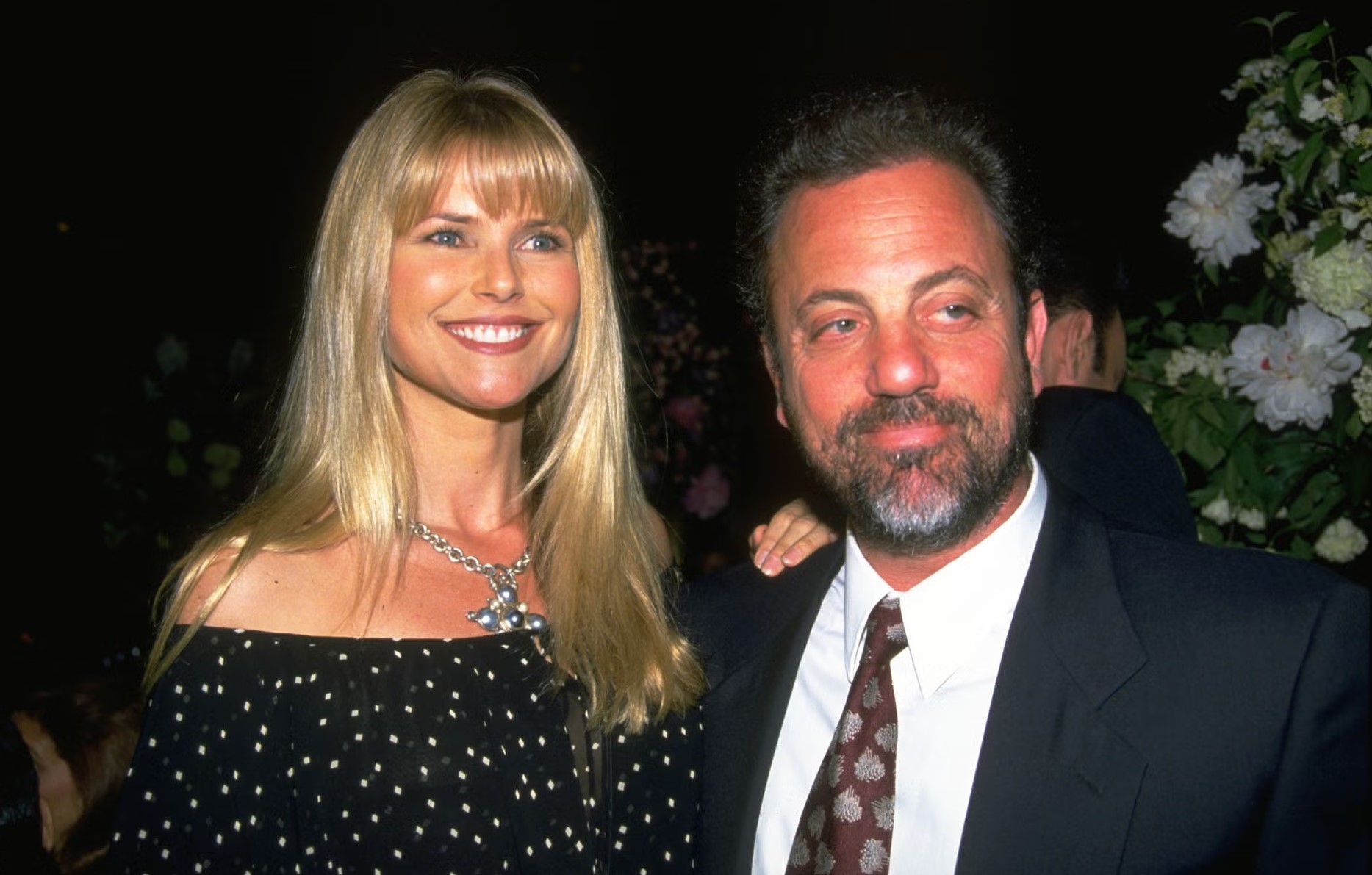A renowned musician breaks his silence about one of entertainment’s most scrutinized relationships, offering unprecedented insights into the personal struggles behind the public facade.
In a rare moment of vulnerability, one of music’s most enduring icons has chosen to share deeply personal revelations about a relationship that captivated the public for nearly a decade. The disclosure, featured in a major new documentary production, marks the first time the artist has spoken so openly about the intimate details of a marriage that was both celebrated and ultimately tragic in its dissolution.
The timing of these revelations is particularly poignant, coming at a moment when the musician faces his own health challenges and reflects on a career spanning more than five decades. The decision to finally address one of the most speculated-about relationships in entertainment history suggests a desire for closure and perhaps a need to set the record straight about events that have been the subject of countless tabloid stories and public speculation.
This unprecedented candor offers audiences a window into the complex realities of maintaining a relationship under intense public scrutiny, where every moment is dissected by media and fans alike. The revelations promise to reshape public understanding of a love story that seemed like a fairy tale from the outside but contained struggles and heartbreak that only the participants truly understood.
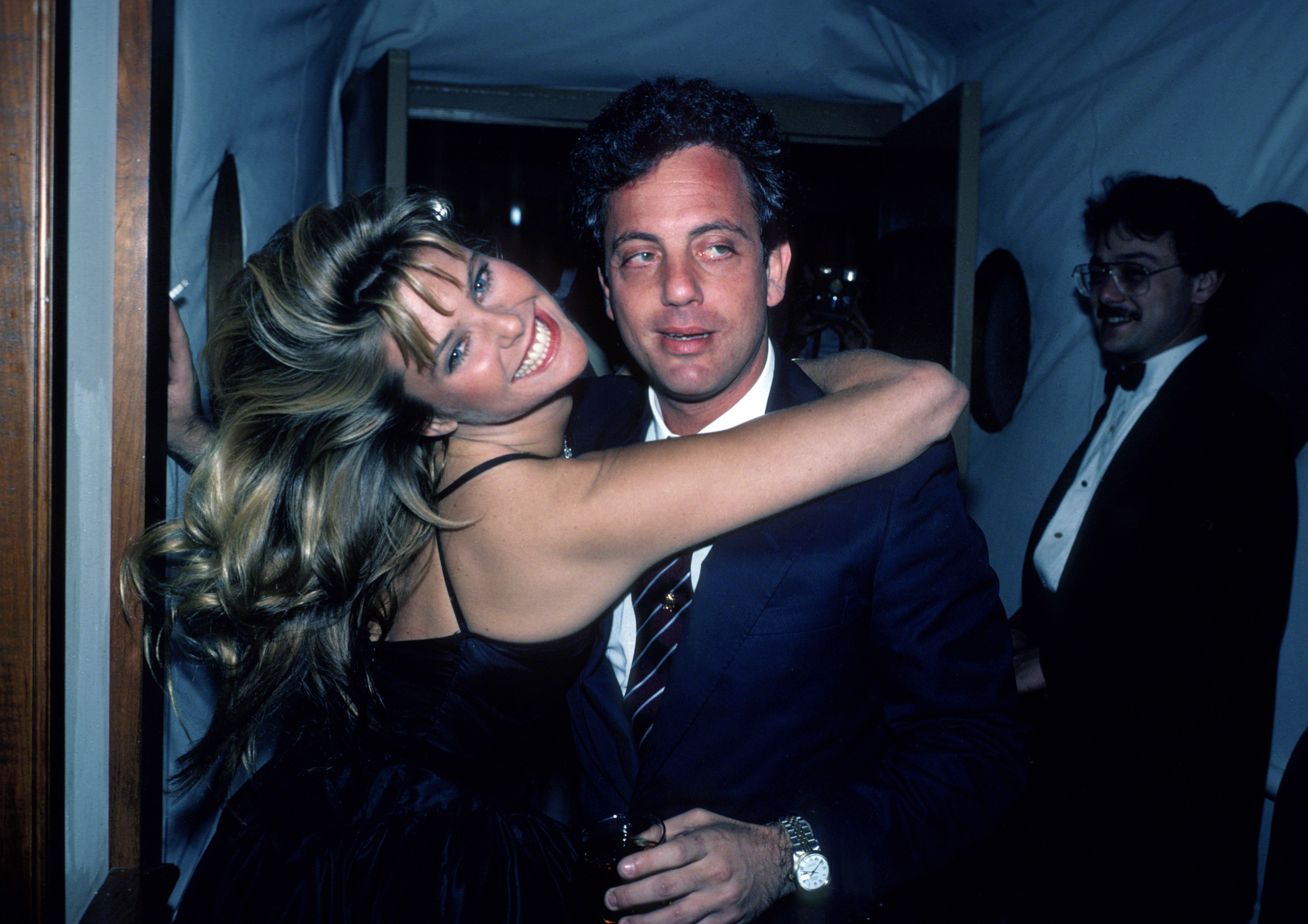
Christie Brinkley and Billy Joel photographed in New York in 1983. | Source: Getty Images
The Cultural Impact of Celebrity Relationships in the 1980s
To understand the significance of this documentary revelation, it’s essential to examine the cultural landscape of celebrity relationships during the 1980s and early 1990s. This was an era when the intersection of music, fashion, and entertainment created unprecedented levels of public fascination with celebrity couples, particularly those who seemed to embody the glamour and excess of the time.
The 1980s represented a unique moment in American popular culture when celebrity relationships became a form of public entertainment in their own right. The rise of MTV, entertainment television shows, and celebrity magazines created an insatiable appetite for details about the personal lives of famous figures. Couples who captured the public imagination became symbols of success, beauty, and the American dream.
During this period, the entertainment industry was experiencing a golden age of cross-pollination between different forms of media and celebrity. Musicians were becoming visual icons through music videos, while models were transitioning into acting and entertainment. This convergence created opportunities for relationships that spanned different aspects of the entertainment world, generating even more public interest and media coverage.
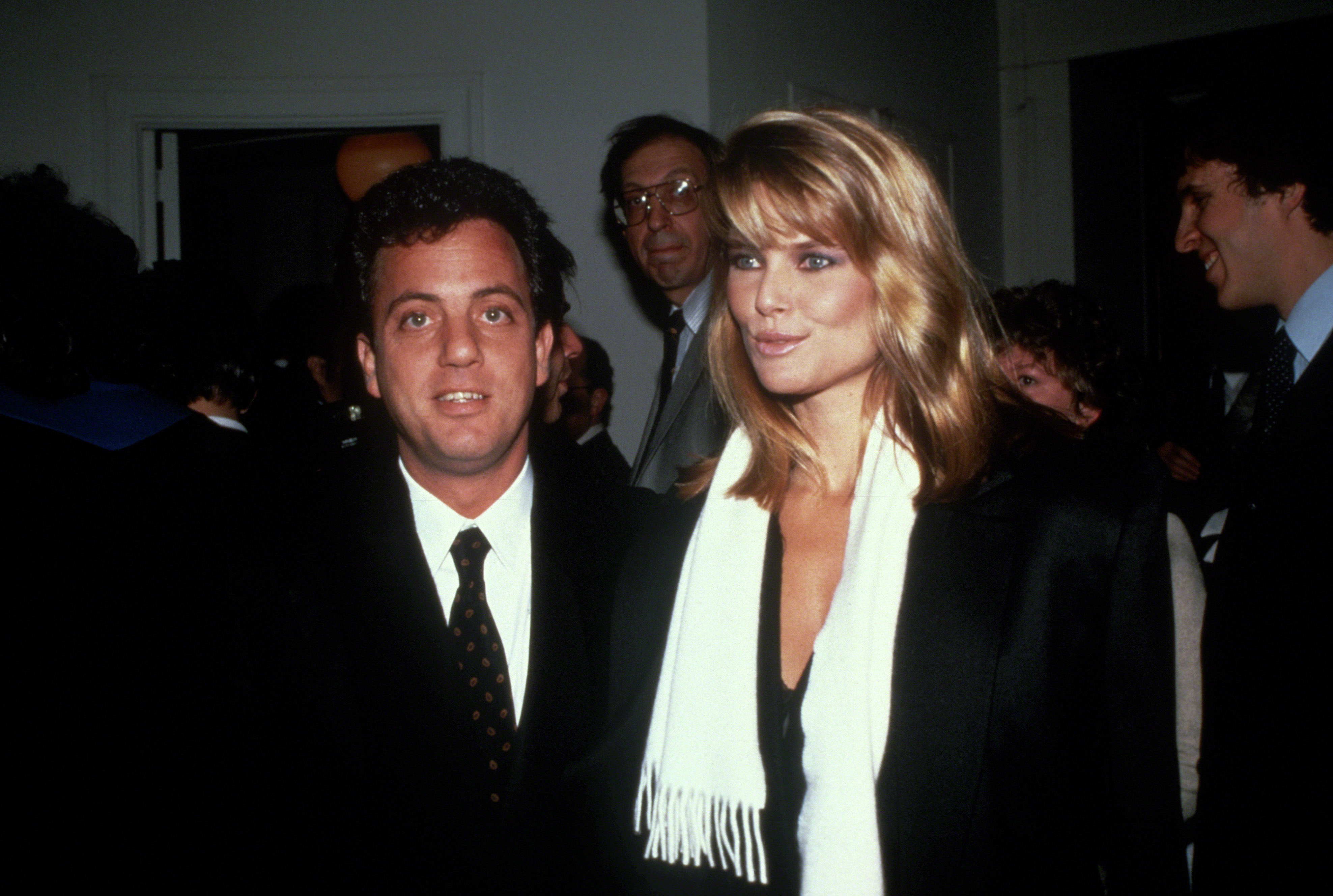
Billy Joel and Christie Brinkley in New York, circa 1983. | Source: Getty Images
The fascination with celebrity couples during this era went beyond simple entertainment value. These relationships often represented broader cultural aspirations and anxieties about success, beauty, and the possibility of finding love despite fame and fortune. They served as modern fairy tales that captured the public imagination while often concealing the very real challenges faced by the individuals involved.
The Documentary: “Billy Joel: And So It Goes”
The revelations about this high-profile relationship are featured in part two of “Billy Joel: And So It Goes,” which premiered on July 25, 2025, on HBO. The documentary represents a comprehensive examination of the music icon’s life and career, providing unprecedented access to Joel’s personal thoughts and memories about pivotal moments in his journey.
Billy Joel, now 76, has long been known for his reluctance to discuss his personal life in detail, making this documentary particularly significant for fans and music historians. The decision to participate in such an intimate project suggests a recognition of his legacy and perhaps a desire to share his story on his own terms rather than leaving it to others to interpret.
The documentary format allows for a level of depth and nuance that traditional interviews or magazine profiles cannot provide. Through carefully curated footage, photographs, and extended conversations, viewers gain insight into not just the facts of Joel’s relationships but also the emotional and psychological dimensions that shaped these experiences.
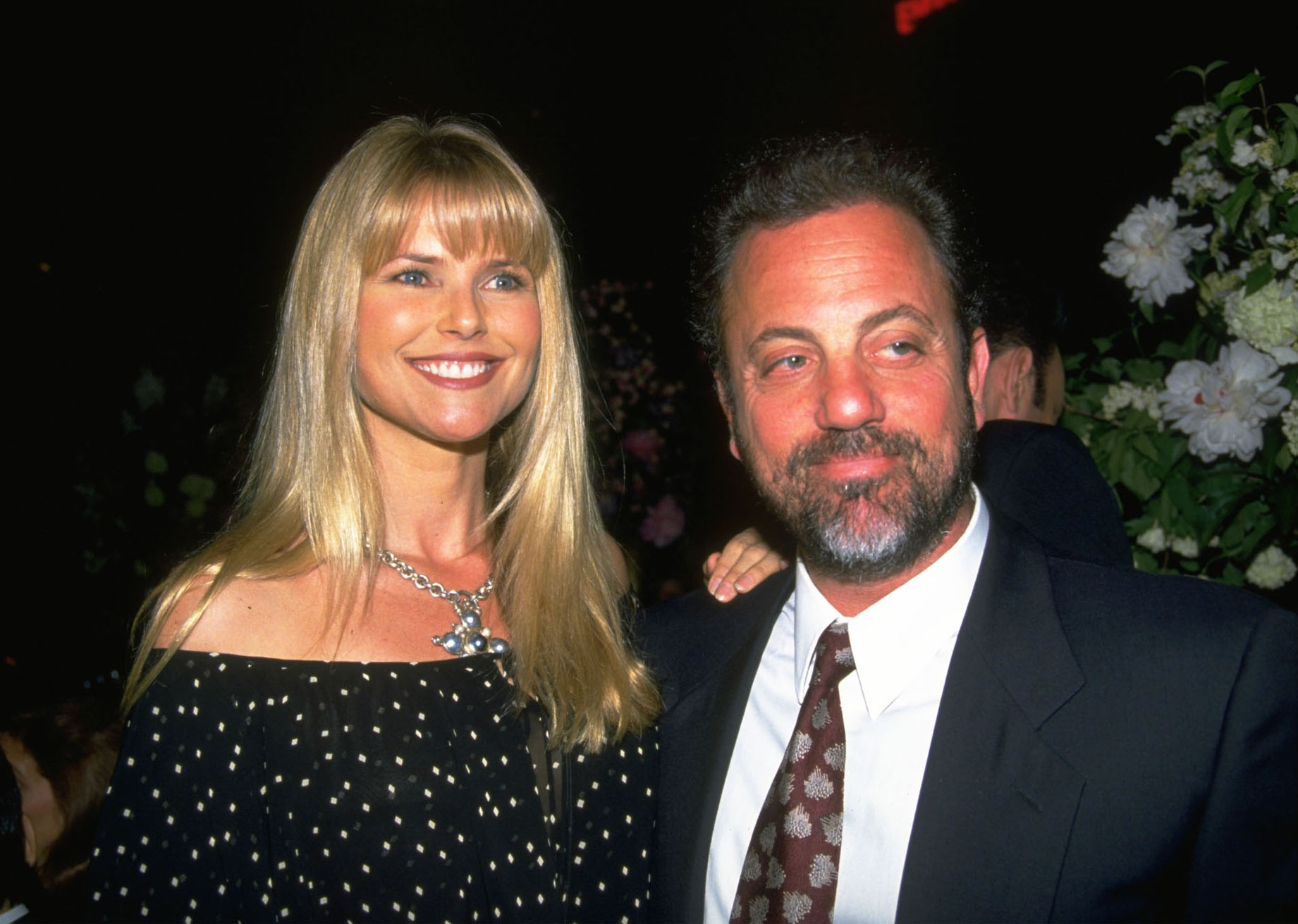
Christie Brinkley and Billy Joel circa 1999. | Source: Getty Images
The timing of this documentary is particularly meaningful given Joel’s recent health challenges and his position as one of the last surviving icons of his generation. The project serves not only as entertainment but also as a historical document that preserves the firsthand accounts of someone who helped shape American popular music.
The Fairytale Beginning: St. Barts, 1983
In the documentary, Joel reveals the romantic origins of his relationship with supermodel Christie Brinkley, which began during a chance encounter in 1983 while both were vacationing in St. Barts. This meeting would prove to be one of the most consequential moments in both of their lives, launching a relationship that would dominate entertainment headlines for the next decade.
Joel’s recollection of their first meeting reveals the sense of wonder and disbelief he felt at the time. “Here I am dating this beautiful supermodel and… me? I’m from Hicksville,” he reflects in the documentary. “What am I doing with her? What’s she doing with me? But that was a very productive time for me.”
The geographical and cultural contrast between Joel’s working-class Long Island background and the glamorous international world that Brinkley inhabited adds depth to understanding their relationship dynamics. Joel’s reference to Hicksville—both a literal place name and a metaphor for his humble origins—highlights the imposter syndrome that many successful people experience when thrust into elite social circles.
After discovering they both lived in New York, the couple went on their first official date to a Beach Boys concert, an event that symbolically connected their shared love of music and marked the beginning of what Brinkley would later describe as a “whirlwind romance” that was “just so much fun.”
The early period of their relationship coincided with one of Joel’s most creatively productive phases. “I wrote a lot of songs for her. She was a muse,” he acknowledges in the documentary, revealing how personal inspiration directly influenced his artistic output during this period.
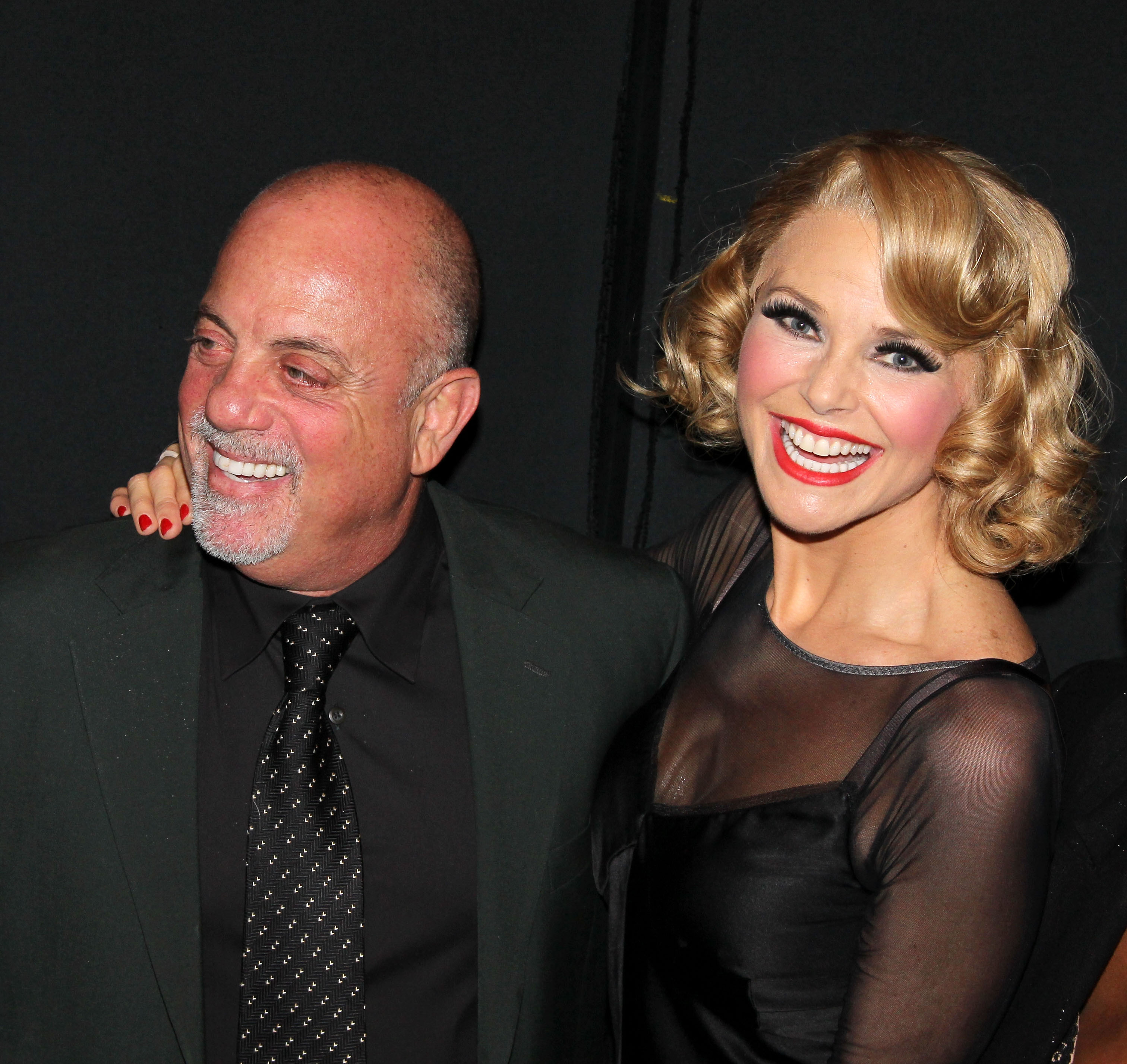
Billy Joel and Christie Brinkley backstage at “Chicago” on Broadway at The Ambassador Theater on June 11, 2011, in New York. | Source: Getty Images
The Creative Renaissance and Musical Legacy
Joel’s admission that Brinkley served as his muse during their relationship provides fascinating insight into the connection between his personal life and artistic creativity. This period saw the creation of some of his most memorable and commercially successful work, including the iconic “Uptown Girl,” which became forever associated with Brinkley’s image and persona.
The concept of the muse has deep roots in artistic tradition, but Joel’s frank acknowledgment of Brinkley’s inspirational role offers a rare glimpse into how contemporary musicians channel personal relationships into their creative work. The songs he wrote during this period were not just commercial products but deeply personal expressions of his emotional state and relationship experiences.
“Uptown Girl” became one of Joel’s most recognizable hits and served as an unofficial soundtrack to their relationship. The song’s music video, featuring Brinkley herself, created a permanent visual record of their romance that continues to captivate audiences decades later. The track’s enduring popularity demonstrates how personal experiences, when translated into art, can take on lives of their own that transcend their original inspiration.
The creative productivity Joel experienced during this relationship highlights the complex relationship between personal happiness and artistic expression. While some artists thrive on emotional turmoil, Joel’s experience suggests that the stability and inspiration provided by a loving relationship can be equally powerful as a creative catalyst.
The Turning Point: “I Go to Extremes”
Christie Brinkley’s perspective in the documentary provides crucial insight into the relationship’s evolution and eventual deterioration. She identifies 1989 and the release of Joel’s single “I Go to Extremes” as a pivotal moment that captured the fundamental tension at the heart of their marriage.
According to Brinkley, the song perfectly encapsulated Joel’s internal conflict—torn between his desire to be a devoted husband and family man and his identity as a restless artist who often sought solace in alcohol and the nighttime world that came with his profession. This duality would prove to be one of the most challenging aspects of their relationship.
The title “I Go to Extremes” itself reflects the all-or-nothing approach that characterizes many artistic personalities. For someone like Joel, whose creative process and public persona were built on emotional intensity and authenticity, the moderate, balanced approach that successful marriages often require may have felt constraining or artificial.
Brinkley’s recognition of this pattern demonstrates her deep understanding of Joel’s character and the impossible position in which both of them found themselves. She was asking for the stability and presence that any spouse would reasonably expect, while he was struggling with creative and personal demons that demanded a different kind of expression and release.
Financial Crisis and Professional Pressures
The year 1989 also brought significant professional challenges that would further strain the marriage. Joel filed a $90 million lawsuit against his former manager, Frank Weber, alleging financial mismanagement and fraud. This legal action revealed the extent to which Joel had been financially exploited, forcing him to tour more aggressively than ever before to recoup his losses.
The financial pressure created by this situation had profound implications for Joel’s personal life and marriage. Instead of being able to enjoy the fruits of his success and spend time building his relationship with Brinkley, he found himself working harder than ever just to recover what had been taken from him.
“I was in a relationship with someone who I cared deeply about. But I was not able to be at home,” Joel explains in the documentary. “And in the end, it all catches up. It’s hard. I was so devastated.” This admission reveals the heartbreaking reality of a man caught between financial necessity and personal desires.
The touring schedule required by his financial situation meant extended periods away from home, missing important moments and milestones in their marriage. For any relationship, such prolonged separations create challenges, but for a marriage already under the intense scrutiny of public attention, these absences became particularly damaging.
The irony of Joel’s situation—that his success as a performer was simultaneously the source of his financial problems and the solution to them—highlights the complex relationship between artistic achievement and personal happiness that many entertainers face.
The Final Chapter: Divorce and Its Aftermath
The end of Joel and Brinkley’s marriage came in 1994, after nine years together. Brinkley’s recollection of their final argument provides a poignant glimpse into how even the most public relationships end in private moments of pain and resignation.
“He said, ‘Yeah, fine, go.’ I tried. I wanted it to work… But it just didn’t work,” Brinkley recalls. The simplicity of this exchange belies the years of accumulated frustration, disappointment, and unfulfilled expectations that had led to this moment.
The divorce marked the end of what had been one of entertainment’s most watched relationships, but both Joel and Brinkley have demonstrated remarkable maturity in how they’ve handled their post-marriage relationship. Their ability to maintain a respectful friendship, particularly for the sake of their daughter Alexa Ray Joel, speaks to the genuine affection and respect that persisted despite their inability to make their marriage work.
The public nature of their relationship meant that their divorce was also conducted under intense media scrutiny, adding another layer of difficulty to an already challenging personal situation. Their decision to handle the dissolution of their marriage with dignity and discretion set a positive example for other celebrity couples facing similar challenges.
Joel’s Health Challenges and Brinkley’s Support
The documentary revelations gain additional poignancy in light of Joel’s recent health challenges. On May 23, 2025, Joel announced that he had been diagnosed with Normal Pressure Hydrocephalus (NPH), a brain condition that commonly affects people over 65 and can cause problems with hearing, vision, and balance.
The diagnosis forced Joel to cancel all scheduled concerts and begin intensive physical therapy under medical supervision. For a performer whose life has been defined by his connection with audiences, this forced hiatus represents a significant personal and professional challenge.
Brinkley’s response to Joel’s health announcement demonstrated the enduring bond between the former couple. On May 24, she posted a heartfelt tribute on Instagram, writing: “Dear Billy, The whole Brinkley gang is sending you lots of love and good wishes for a full and speedy recovery.”
Her message went beyond simple well-wishes to acknowledge Joel’s unique gift as a performer: “It also reminded me of all the joy you create, and all the sensational sing a longs you’ve lead … you turn an arena of strangers into a living room full of friends as we all sway in unison.”
The public nature of Brinkley’s support sparked both positive and negative reactions from observers. Many praised her gesture as evidence of grace and maturity, with comments like “That’s class” and “Very classy” appearing throughout social media. Others questioned why she chose to make her support public rather than private.
The Legacy of Their Relationship
The relationship between Billy Joel and Christie Brinkley has left an indelible mark on popular culture that extends far beyond their individual careers. Their pairing represented a particular moment in American culture when the boundaries between different forms of celebrity were becoming increasingly fluid.
Their story serves as both inspiration and cautionary tale about the challenges of maintaining personal relationships under public scrutiny. While their love story captivated millions and produced enduring artistic works, it also demonstrated the very real costs of fame and the difficulty of balancing public personas with private needs.
The documentary’s exploration of their relationship provides valuable insights into the human side of celebrity that is often obscured by media coverage and public relations efforts. By sharing their story honestly, both Joel and Brinkley have contributed to a more nuanced understanding of how real people navigate the unique challenges of high-profile relationships.
Brinkley’s Memoir: “Uptown Girl”
Christie Brinkley’s decision to publish her memoir “Uptown Girl” in April 2025 adds another dimension to the public understanding of their relationship. The book, whose title deliberately references Joel’s famous song, provides her perspective on their marriage and its dissolution.
In the memoir, Brinkley reveals that “Uptown Girl” was initially written for a “mystery girl” Joel had been talking to on the phone, but once their relationship began, he finished the song in her honor. This detail adds layers to understanding how their personal relationship became intertwined with Joel’s artistic output.
Brinkley’s book addresses difficult topics including Joel’s drinking and rumored affairs, subjects she admits were challenging to include: “The hardest thing to include was criticism of Billy, because I do care about my friendship with him.” This statement reveals the delicate balance she sought to maintain between honesty and loyalty.
The memoir also captures the emotional distance that eventually characterized their marriage, with Brinkley writing of feeling “lonely, despite the fact that he was right there.” This poignant observation highlights how two people can share a life while remaining fundamentally disconnected.
Perhaps most significantly, Brinkley clarifies her feelings about the end of their marriage: “To be clear, I never wanted to end things with Billy. But his drinking was bigger than the both of us.” This admission provides crucial context for understanding the forces that ultimately proved stronger than their love for each other.
Continuing Bonds and Family Connections
Despite their divorce, Joel and Brinkley have maintained a relationship that demonstrates the possibility of transforming romantic love into lasting friendship and mutual respect. Their shared commitment to their daughter Alexa Ray Joel has provided a foundation for continued cooperation and support.
Alexa Ray Joel, now an accomplished musician in her own right, has served as a bridge between her parents and a reminder of the positive aspects of their relationship. Her own tribute to her father during his health crisis—”My Dad is the strongest and most resilient man I’ve ever known”—reflects the strong family bonds that have persisted despite the changes in her parents’ relationship.
The family’s ability to come together during challenging times, such as Joel’s recent health issues, demonstrates the maturity and growth that all parties have achieved since their divorce. Their story offers hope for other divorced couples that it is possible to maintain respect and affection even when romantic relationships end.
Conclusion: Lessons in Love, Loss, and Resilience
The documentary revelation of Billy Joel and Christie Brinkley’s relationship story provides a masterclass in the complexities of love, fame, and human connection. Their willingness to share both the beautiful and painful aspects of their relationship offers valuable insights into the challenges faced by all couples, regardless of their public profile.
Their story reminds us that even the most seemingly perfect relationships face real challenges and that success in one area of life does not guarantee success in others. Joel’s artistic achievements and Brinkley’s professional success could not shield them from the fundamental human struggles that affect all relationships.
Most importantly, their continued friendship and mutual support demonstrate that love can take many forms and that the end of a romantic relationship does not necessarily mean the end of caring and connection. As Joel continues his recovery and both continue their respective careers, their story serves as a testament to the possibility of growth, forgiveness, and enduring respect.
The documentary’s exploration of their relationship ultimately celebrates both the joy they brought to each other and the grace with which they’ve handled its transformation. In an era when celebrity breakups often become public spectacles of recrimination and bitterness, Joel and Brinkley’s story offers a different model—one of dignity, honesty, and enduring connection that transcends the boundaries of traditional relationship categories.

Ethan Blake is a skilled Creative Content Specialist with a talent for crafting engaging and thought-provoking narratives. With a strong background in storytelling and digital content creation, Ethan brings a unique perspective to his role at TheArchivists, where he curates and produces captivating content for a global audience.
Ethan holds a degree in Communications from Zurich University, where he developed his expertise in storytelling, media strategy, and audience engagement. Known for his ability to blend creativity with analytical precision, he excels at creating content that not only entertains but also connects deeply with readers.
At TheArchivists, Ethan specializes in uncovering compelling stories that reflect a wide range of human experiences. His work is celebrated for its authenticity, creativity, and ability to spark meaningful conversations, earning him recognition among peers and readers alike.
Passionate about the art of storytelling, Ethan enjoys exploring themes of culture, history, and personal growth, aiming to inspire and inform with every piece he creates. Dedicated to making a lasting impact, Ethan continues to push boundaries in the ever-evolving world of digital content.
